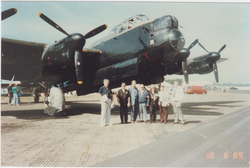
location & layout of airfield.
B.C Form 10/ Lancaster Pilots Notes
576 Sqn Lancaster PD 309 recovery
GROUP CAPTAIN TERENCE JOHN ARBUTHNOT
576 Sqn Wing/Cmdr Basil Arthur Templeman-Rooke
576 Sqn F/O William Carland Johnston
49 Sqn Flt/Lt Victor Medway Arnold
49 Sqn Sgt. E.B.(Ted) Cachart.
49 Sqn Sgt Douglas D.R. Dalaway
576 Sqn Flt/Lt Bertram W. Roberts
576 Sqn Flt/Sgt Johnny Musgrove
576 Sqn Flying Officer Edward L Saslove
49 Sqn Pilot Officer Edgar R. G. Haines D.F.M.
576 Sqn Flying Officer Frank Wilson
576 Sqn Flt/Sgt Dennis Ovenden
49 Sqn Flying Officer Alexander V Bone
576 Sqn Warrant Officer Frederick Taylor, DFM
576 Sqn Warrant Officer Reg Croot
49 Sqn. S/L J.E Raw-Rees D.F.C.
576 Sqn Sgt Alfred Thorpe Turton
576 Sqn Warrant Officer Eugene Patrick (Jimmy) Collins
576 Sqn F/O Archibald de Largy Greig
|
We are proud and pleased to be able to present the RAF service career of this distinguished officer. Many thanks to Carolynne Templeman-Rooke for the information on her late father. A superb A highly respected and inspirational leader, 576 Sqn crews had the highest regard for W/Cdr Templeman-Rooke. The W/Cmdr Started his RAF service in 1941 training initially as a raw recruit at No 1 Initial Training Wing at Scarbourgh,North Yorkshire. After basic training at Scarbourgh and having been selected for Pilot Training, Basil was posted to No 4 Elimentary and Reserve Flying Training School, RAF Brough (4EFTS) on the north bank of the River Humber near Hull. (now British Aerospace systems, Brough ). Continuing his basic flying training at various RAF training stations in Canada and the UK, finally crewing up at No81 Operational Training Unit, RAF Whitchurch. Posted as a Sgt pilot with 100 Sqn to RAF Grimsby ( The rest he received was a posting after a period of leave to 28 Operational training unit RAF Wymswold near On 16 January 1944 now a Pilot Officer Basil was posted to 1667 Heavy Conversion Unit RAF Faldingworth, again as a pilot Instructor. In February 1944 this unit moved to RAF Sandtoft near Sandtoft lived up to its name of Prangtoft with many accidents occurring. This unit was part of No1 Groups Lancaster Finishing School. These Heavy Conversion Units were tasked with converting novice crews from the twin engined Vickers Wellington medium Bomber to the four engined Heavies of Bomber Command, the Handley Page Halifax and the Avro Lancaster. No1 Group squadrons operated the Avro Lancaster from the Groups North Lincolnshire airfields. This appointment was viewed as more dangerous than taking part in operations,as Novice crews and worn out training aircraft often resulted in many crashes and loss of life. Posted to 576 Sqn RAF Elsham Wolds,near Scunthorpe with the rank of Flying Officer in May 1944. His first operation being on 11th May to (576 Sqn at this period were sharing the Elsham Wolds airfield with 103 Sqn. 103 were the parent Sqn from which 576 was formed.) In October 1944 the Sqn was moved to RAF Fiskerton when No1 Group took over command of RAF stations Scampton, Dunholme Lodge and Fiskerton from No 5 Group in a station reorganisation by Bomber Command HQ .These stations including Hemswell were administered from Scampton (15 Base) By June 1944, having been promoted to Sqn Leader, he was appointed A flight Commander. This post he held until the end of February 1945 when he was promoted Wing Commander and appointed Commanding Officer 170 Sqn at RAF Hemswell. After the war, W/Cdr Templeman-Rooke was now in command of 210 Sqn specializing in maritime operations from In 1951 he was awarded a well earned Air force cross. After tours of duty in With the withdrawal of British forces from the In 1975 he was appointed General Manager of the Chelmsford Golf Club at an anxious time, when its fortunes were at a low ebb. Thanks to his planning and good management, the club recovered to thrive once again. A man of great modesty, he always claimed that his unorthodox methods had allowed him to lead a "charmed life". |
||
|
Wing Commander Basil Arthur Templeman-Rooke AFC, DFC and Bar.This picture was taken sometime after february 1945 and in Carolynne,s own words "Attached is our favorite photo of Dad - a real "Flyboy" - hat slightly rakishly askew !" |
A very detailed list of RAF stations the Wing/Cmdr was posted to during his RAF career. Click your Mouse Button to enlarge the image. |
Page 2 of the list taken from the Wing/Cmdr,s Log Book. |
|
These pages are taken from the Wing Cmdrs Log book showing his operations and aircraft types flown with 1667 HCU and 576 Sqn. |
|
|
|
|
|
|
|
|
|
|
|
|
|
At last the end of hostilities. The Wing/Cmdr however, decided to write the comment on Wars end in pencil. Carolynne has explained "On the date May 8, 1945 you will see the entry " End of World War II" but it is written in pencil ! When I asked Dad why it was in pencil, he said it was because no-one actually believed it and assumed it would start up again in a few days !" |
|
The family sometime in the 1950,s. Carolynne is on the left and Lives in California. Her brother Gary resides in Australia, and sister Michelle in Devon. |
Wing Cmdr Templeman-Rooke at RAF Coningsby. |
The Wing Cmdr seen relaxing at a Golfing Function at Malden, his home town near Chelmsford. |
|
Wing/Cmdr Templeman-Rooke seen with RAF Hemswell officers at the station in 1945. |
RAF Hemswell Operations Board showing the Order of Battle for 150 and 170Sqn crews (150 sharing Hemswell with 170) taking part in the Mainforce attack on the German Garrison and airfields at Heligoland. This Island at the mouth of the River Elbe guarded the entrance to the North German Port of Hamburg. The operation was in support of 21st Army Group under command of Field Marshall Montgomery who were advancing on the Port from the South. NOTE: On the Operations Board you will see the Pilot,Flt/Lt Chandler. In the Film "Night Bombers" it is this officer known as "Harris" who is the Captain of the Lancaster V- Victor in the Film. Also note the comments made at the bottom of the board by the Wing/Cmdr. This board survived for many years post war at Hemswell, but sadly it has now been lost since the closure of the station. |
Wing/Cmdr Templeman-Rooke at the Farewell Party held on his retirement as General Manager of Chelmsford Golf Club. |
|
Wing/Cmdr Templeman-Rooke seen here in the Film "Night Bombers". This film depicts a typical Bomber Command station preparing for an operation. Filmed by Air Commodore Iliffe Cozens. 15 Base (Scampton) Commander. The aim was to show novice crews what to expect when they were posted to an operational Bomber station. The station Commander in the film is Hemswells Commanding Officer, Group Captain Boyd Drayton Sellick. At Fiskerton Wing Cmdr Sellick was 576 Sqn,s CO and the then Sqn Ldr Templeman-Rooke,s Commanding Officer |
Wing/Cmdr Templeman-Rooke (Second in from Right) talking to Prime Minister Edward Heath. |
Wing/Cmdr Templeman-Rooke accepting as CO 37 Sqn the Dunning Cup at RAF Luqa, Malta. The Prestigious Coastal Command Dunning Cup Competition is named after Squadron Commander Edwin Harris Dunning.This Officer landed his Sopwith Pup on HMS Furious in Scapa Flow, Orkney on 2nd August 1917. He was killed five days later, during his second landing attempt of the day, when an updraft caught his port wing, throwing his plane overboard. Knocked unconscious, he drowned in the cockpit.In memory of Dunning, the Dunning Cup or Dunning Memorial Cup is given annually to the officer who is considered to have done most to further aviation in connection with the Fleet for the year in question. In the 1950s and 1960s it was awarded to Royal Air Force squadrons which achieve the highest standard on courses at the Joint Anti-Submarine School . |
|
Wing/Cmdr Templeman-Rooke with Royal Canadian Airforce Officers |
|
|
|
|
|
|
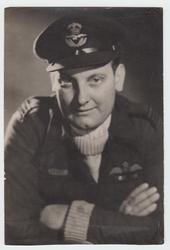
_182x250.jpg)
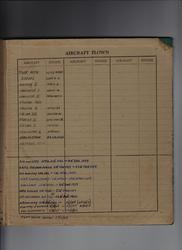
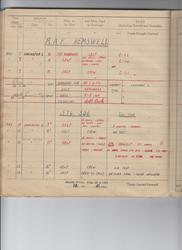
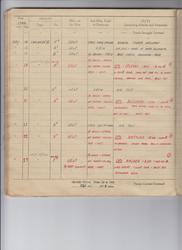
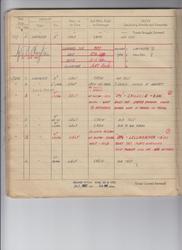
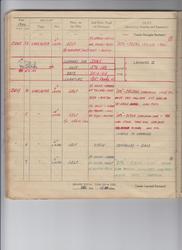
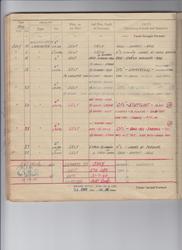
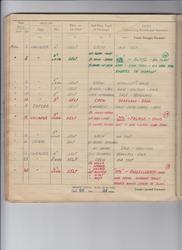
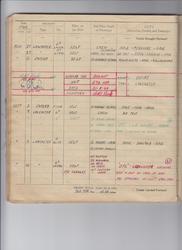

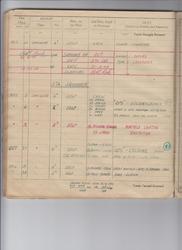
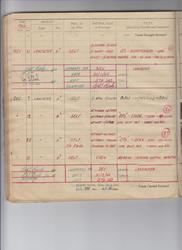

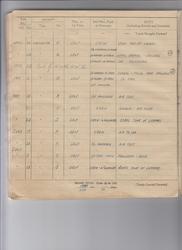
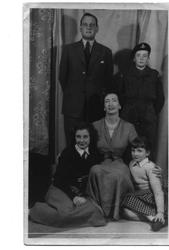
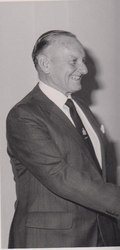

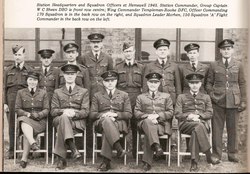
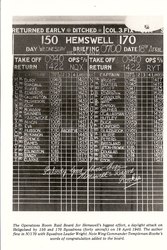
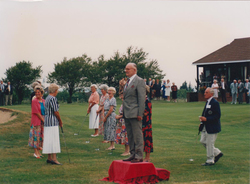
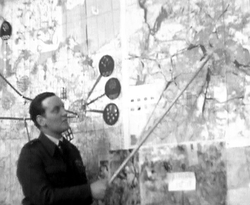
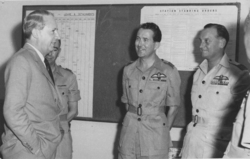
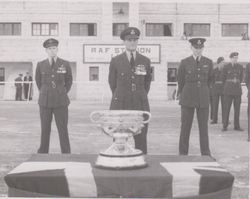
_250x158.jpg)
